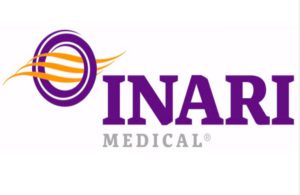 Inari Medical today announced it launched two new catheters for venous stent thrombosis and venous thromboembolism.
Inari Medical today announced it launched two new catheters for venous stent thrombosis and venous thromboembolism.
The Irvine, California-based company launched its RevCore thrombectomy catheter and the Triever16 Curve catheter. RevCore is a mechanical thrombectomy device for venous in-stent thrombosis, and Triever16 Curve is for pulmonary embolism and peripheral thrombectomy.
“We are thrilled to announce the commercial launch of these two products, which reinforce our unwavering commitment to addressing unmet needs with purpose-driven innovation,” CEO Drew Hykes said in a news release. “We continue to push the boundaries, and we are excited about the potential impact we can make on patients’ lives with these products and beyond.”
More about RevCore
RevCore has a unique diameter-controlled coring element that is designed to safely engage thrombus within stents. Inari Medical has developed a solution for an entirely new patient population.
“Until now, physicians have had limited options to treat patients suffering from symptoms of venous stent failure and some patients are relegated to repeated suboptimal interventions,” said Dr. Steven Abramowitz, chair of vascular surgery at MedStar Health in Washington D.C. “RevCore is a game changer as it physically removes in-stent thrombus, restores flow, and could potentially reduce the need for additional reintervention. There are a lot of patients out there that may benefit from the RevCore procedure.”
More about Triever16 Curve
The Triever16 Curve catheter is the latest addition to the company’s FlowTriever platform. It is purpose-built to be versatile for both pulmonary embolism and peripheral thrombectomy. The catheter is highly trackable and features a pre-shaped curve for targeted aspiration.
Inari Medical touts that the catheter has unique advantages over 16Fr continuous aspiration catheters, including compatibility with FlowSaver blood return and simple access to larger, more powerful 20Fr or 24Fr catheters.
“Triever16 Curve is an important addition to the already comprehensive Inari VTE toolkit,” said Dr. Angelo Marino, interventional radiologist and assistant professor of clinical radiology and biomedical imaging at Yale School of Medicine. “Every VTE patient is different. With both aspiration and mechanical bloodless thrombectomy options available, including multiple sizes and shapes of large-bore aspiration catheters, we are equipped to treat nearly every VTE patient that comes in the door.”